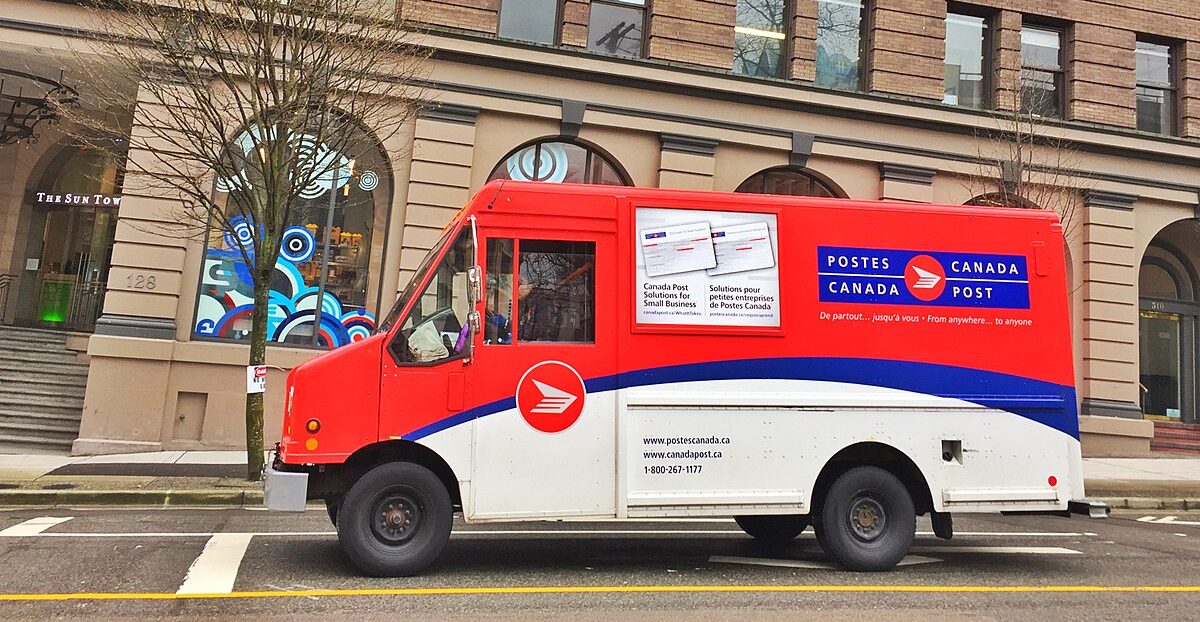Since 12:01 a.m. today, Canada Post has come to a complete standstill. CEO Doug Ettinger forced postal workers out on strike after ignoring their demands. He also threatened them with mass layoffs and slashing their working conditions. The key issue is the crown corporation’s financial situation: the postal industry has evolved considerably over the past 20 years, and Canada Post’s budget has been hit hard.
With parcel delivery being more and more common, and letter mail being less-so, Canada Post faces challenges from seemingly ever expanding competitors like Amazon. However, postal workers aren’t striking just for themselves, as they want to commit to their company and consolidate it as the most useful service possible to the public. They are proposing new services they could offer their communities, through the “Delivering Community Power” campaign.
The initiative suggests an expansion of services offered by Canada Post as a way to increase revenue and adapt to the changing market. Proposals include:
- postal banking,
- elder check-ins,
- high-speed internet,
- affordable food delivery,
- electric vehicle charging, and
- community hubs.
Doug Kellam, a CUPW shop steward who has been a Canada Post worker for seven years, told The North Star that this campaign proposes to “refashion [Canada Post] to serve Canadian communities, and part of that would be really consulting with our communities and really responding to their needs. That’s where things like, especially, postal banking and community hubs are extremely important.”
They also propose upgrading their fleet with union-made electric vehicles, retrofitting postal buildings with solar panels, and expanding the use of Canada Post vehicles as last mile delivery to ease congestion, pollution, and to decrease the use of vehicles that aren’t loaded to capacity.

Delivering Community Power grew out of a previous CUPW campaign, Save Canada Post. This initiative launched during the Harper government in response to rampant downsizing caused by services like letter-mail moving to email and financial transactions being increasingly handled digitally.
Kellam explains that “over the last 15 or 20 years, the advent of the internet and the shift towards conducting business and personal communication and all of these things online,” has led to a loss of revenue.
“For most of its existence, Canada Post, we’ve had a monopoly on letter mail” and for most of the courier’s existence that service “more than paid for the services that Canada Post provides.”
One of the downsizing measures was “to move towards pretty much getting rid of door-to-door delivery as a means of making the service more efficient,” says Kellam, “so part of that was the idea of basically doing community mailboxes.” The federal government also privatized retail post offices, subcontracting service to corporations like London Drugs, owned by BC billionaire Brandt Louie, and Shoppers Drug Mart, owned by the billionaire Weston family.
The Save Canada Post Campaign ended up being largely successful, keeping door-to-door delivery and halting the selling-off of assets.
Currently, Canada Post workers are experiencing new sets of challenges imposed on them by their employer, which they are hoping to address in this current round of bargaining.
The company is hiring people for a new letter sorting position to allow more letters and parcels to be delivered. Mail carriers like Kellam say it isn’t a more efficient system than the time-value system currently used, which splits the work day into pre-determined periods for delivery, sorting, and pick-ups.
“The bottom line is, it’s a half-assed response to try to make things more efficient,” says Kellam. “What ends up happening is that the letter carriers are having to take the mail that’s been sorted by the routers, and then they have to actually pair it with the other types of mail in their trucks,” making the initial sorting redundant.
This new mail sorting system requires mail carriers to carry more mail on longer routes. With Canada Post vying to also take away stress leave, the combination of these two factors will likely increase physical and mental strain for workers.
While the union is pushing for community-oriented solutions in the face of parcel delivery corporations and e-commerce occupying increasingly larger chunks of the market, politicians are largely in favour of allowing the crown corporation to be eaten up by privatization. Labour disputes with Canada Post have a long history of being legislated back to work, with four strikes since 1987 receiving back-to-work orders.
Since August, both the Teamsters rail strike and the recent longshore workers strike have received back-to-work orders.

Be part of the conversation!
Only subscribers can comment. Subscribe to The North Star to join the conversation under our articles with our journalists and fellow community members. If you’re already subscribed, log in.